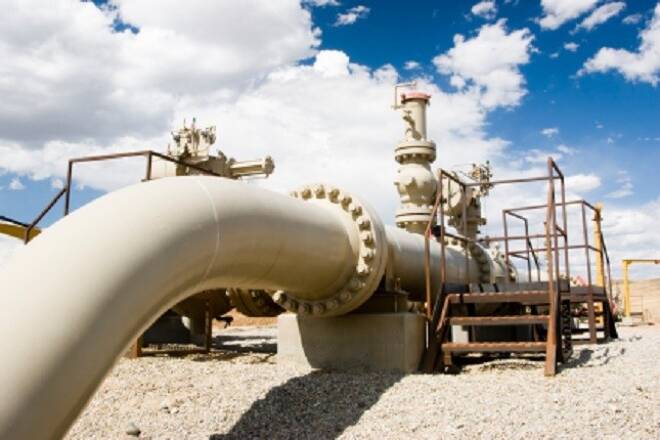Advertisement
Advertisement
Natural Gas Price Fundamental Daily Forecast – EIA Storage Report Consensus Estimate is 105 Bcf
By:
Based on yesterday’s price action and today’s early movement, the direction of July Natural Gas is likely to be determined by trader reaction to a technical Fibonacci level at $2.841.
Natural gas is trading slightly higher early Thursday, shortly ahead of the regular session opening and the release of the U.S. Energy Information Administration’s weekly storage report at 1430 GMT.
At 0938 GMT, July Natural Gas is trading $2839, up $0.002 or +0.07%.
According to the U.S. Energy Information Administration, supply rose by 89 billion cubic feet for the week-ended May 4, lower than the 92 billion forecast by analysts at S&P Global Platts. However, the figure was above the 75 Bcf averaged over the past five years.
Currently, national stocks sit at an estimated 1.432 Trillion Cubic Feet, a 26.6% deficit to the five-year average of 1.952 Tcf, according to the EIA data.
Yesterday’s range was pretty impressive with the market rallying from $2.732 to $2.833. The move serves as proof that buyers are still defending recent bottoms at $2.722 and $2.71.
Forecast
Based on yesterday’s price action and today’s early movement, the direction of July Natural Gas is likely to be determined by trader reaction to a technical Fibonacci level at $2.841.
A sustained move over $2.841 will indicate the presence of buyers. If this generates enough upside momentum, buyers may make a run at a pair of tops at $2.878. This is a potential trigger point for an acceleration to the upside with $2.919 the next major target.
A sustained move under $2.841 will signal the presence of sellers. This could drive the market into $2.817 then $2.800.
This week’s EIA storage report is expected to show a build of 105 Bcf.
Last week, natural gas inventories continued to rebuild. The EIA report for the week-ending May 4 showed a robust 89 Bcf injection. This was higher than the 75 Bcf five-year average and the 49 Bcf prior year build.
Total working gas stocks currently sit at 1432 Bcf, still 863 Bcf below the year-ago level and 520 Bcf below the five-year average of 1952 Bcf.
We continue to look for the possibility of a two-sided trade because projected warm weather suggests low heating demand, but the building of cooling demand, could have a mixed impact on the rate of subsequent storage injections.
About the Author
James Hyerczykauthor
James Hyerczyk is a U.S. based seasoned technical analyst and educator with over 40 years of experience in market analysis and trading, specializing in chart patterns and price movement. He is the author of two books on technical analysis and has a background in both futures and stock markets.
Advertisement
